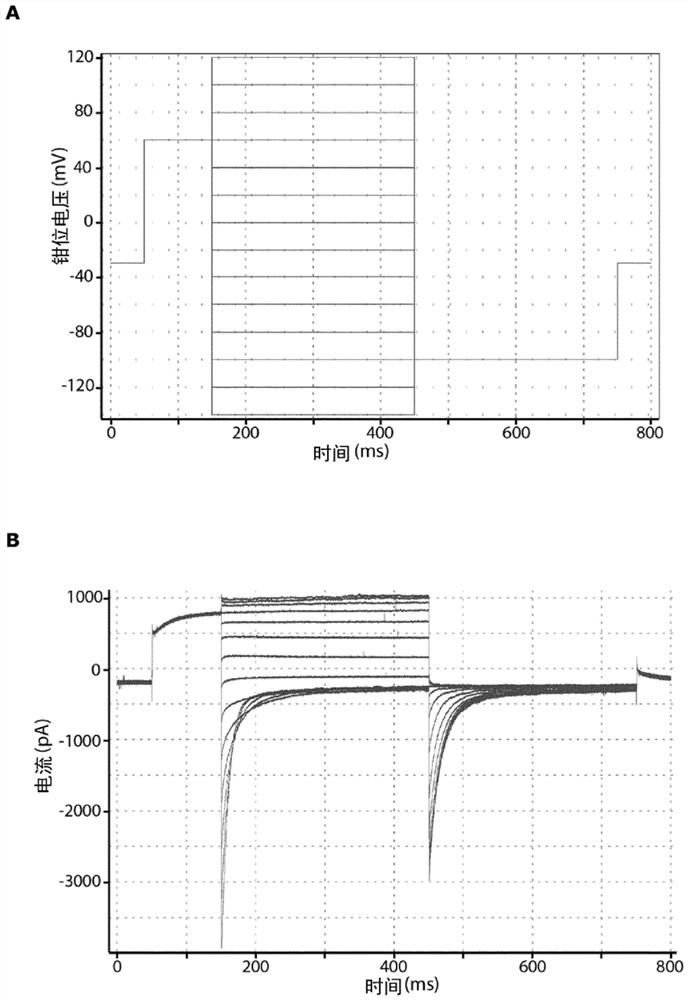Compounds for the treatment of neuromuscular disorders
A neuromuscular, compound technology, applied in the field of improving and/or preventing neuromuscular disorders, treating, preventing and/or improving neuromuscular disorders
- Summary
- Abstract
- Description
- Claims
- Application Information
AI Technical Summary
Problems solved by technology
Method used
Image
Examples
Embodiment 1
[1680] Example 1: (S)-2-(4-Bromo-2-(isoxazol-5-yl)phenoxy)propanoic acid; following General Procedure A
[1681]
[1682] At 0°C, DIAD (3.87mL, 19.88mmol) was added dropwise to (R)-tert-butyl 2-hydroxypropionate (1.2) (2.076g, 14.20mmol), 4-bromo-2 In a solution of -(isoxazol-5-yl)phenol (1.1) (3.75 g, 15.62 mmol) and triphenylphosphine (5.21 g, 19.88 mmol) in THF (150 mL). The solution was stirred for an additional 15 minutes at 0°C. The bright yellow solution was warmed to room temperature and stirred overnight. MeOH (10 mL) was added and the volatiles were removed in vacuo to give a dark orange oil. Formic acid (55 mL, 1434 mmol) was added and the mixture was heated at 70 °C for 1 h. Volatiles were removed in vacuo and excess formic acid was removed by co-evaporation with toluene (30 mL). Aqueous NaOH (0.5M) was added and the aqueous layer was washed with EtOAc (2 x 25 mL). The aqueous layer was acidified with aqueous HCl (1M) and extracted with EtOAc (3 x 25 mL). ...
Embodiment 2
[1685] Example 2: (2S)-2-[4-Bromo-2-(5-cyclopropyl-1,2-oxazol-3-yl)phenoxy]propionic acid according to General Procedure A
[1686]
[1687]Hydroxylamine hydrochloride (1.59g, 22.88mmol) was added to 5-bromo-2-hydroxybenzaldehyde (2.1) (2.3g, 11.44mmol) and pyridine (2.78ml, 34.3mmol) in ethanol (20ml) at room temperature in the stirred solution. After 4 hours, the mixture was diluted with water (200ml), the pH of the solution was adjusted to 4-5 by adding 1M hydrochloric acid, and stirred for 3 hours. The resulting precipitated solid was collected by filtration, washed with water (3 x 10 mL), and dried in vacuo at 45 °C for 3 days to give (E)-5-bromo-2-hydroxybenzaldehyde oxime (2.2) (1.986 g, 9.14 mmol, 80% yield) off-white solid. Product analyzed by LCMS (Waters Acquity UPLC, X-Select, Waters X-Select UPLC C18, 1.7 μm, 2.1 x 30 mm, acidic (0.1% formic acid) 3 min method, 5-95% MeCN / water): m / z 216 / 218 (M+H) + (ES + ); 99.4% purity at 1.268 min (diode array). 1H NMR...
Embodiment 3
[1690] Example 3: (S)-2-(4-Bromo-2-(isoxazol-3-yl)phenoxy)propanoic acid according to General Procedure A
[1691]
[1692] To a stirred solution of (E)-5-bromo-2-hydroxybenzaldehyde oxime (2.2) (485 mg, 2.245 mmol) in DMF (10 mL, 129 mmol) was added N-chlorosuccinimide (360 mg, 2.69 mmol), and then add 1 drop of 1M hydrochloric acid. After 1 hour, ethynyltrimethylsilane (0.311 mL, 2.245 mmol) was added, followed by triethylamine (0.407 mL, 2.92 mmol). After 16 hours, the mixture was diluted with water (50 mL), adjusted to pH 5-6 by 1M hydrochloric acid, and extracted with ethyl acetate (50 mL). The organic extract was washed with brine (25ml), dried (MgSO 4 ) and evaporated in vacuo. The residue was dissolved in dichloromethane (5 mL), the solution was filtered, and then added to a 24 g silica gel column equilibrated in isohexane. The column was eluted with a gradient of 0-50% ethyl acetate in isohexane to give 4-bromo-2-(5-(trimethylsilyl)isoxazol-3-yl)phenol (3.1) (4...
PUM
 Login to View More
Login to View More Abstract
Description
Claims
Application Information
 Login to View More
Login to View More - R&D
- Intellectual Property
- Life Sciences
- Materials
- Tech Scout
- Unparalleled Data Quality
- Higher Quality Content
- 60% Fewer Hallucinations
Browse by: Latest US Patents, China's latest patents, Technical Efficacy Thesaurus, Application Domain, Technology Topic, Popular Technical Reports.
© 2025 PatSnap. All rights reserved.Legal|Privacy policy|Modern Slavery Act Transparency Statement|Sitemap|About US| Contact US: help@patsnap.com



